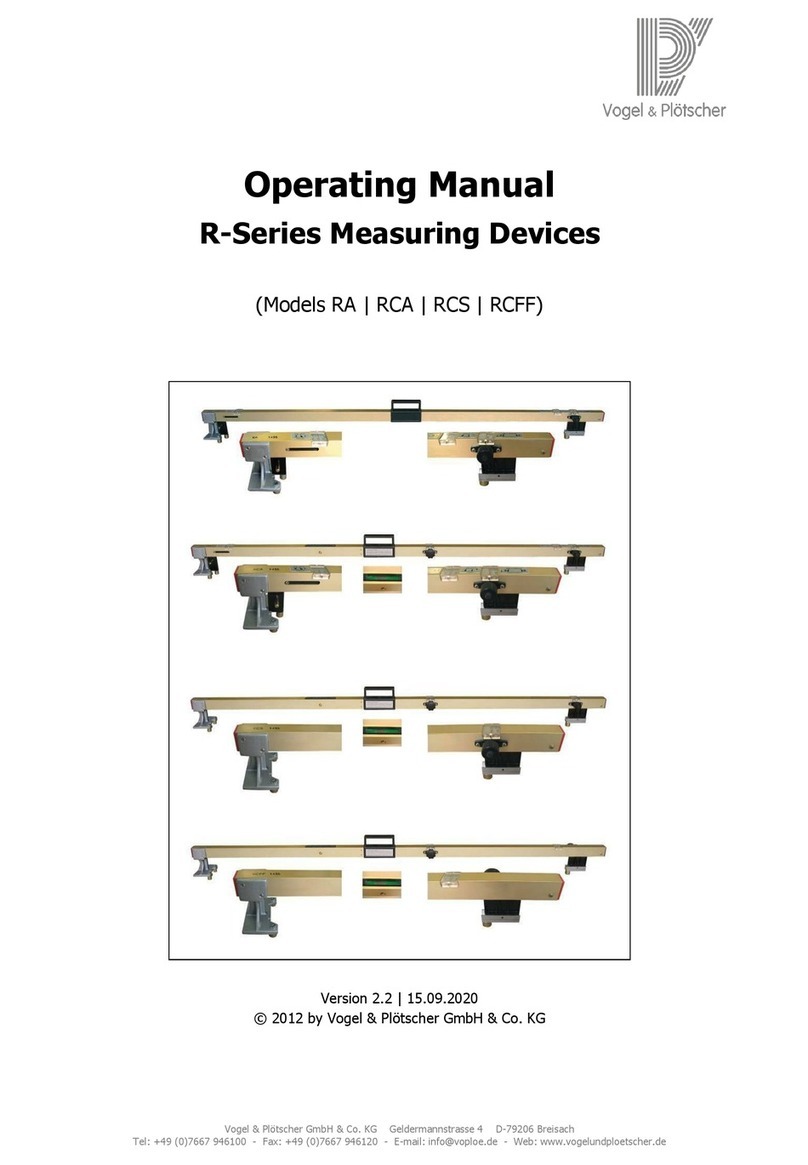
Page: 2 / 28
© 2016 by Vogel & Plötscher GmbH & Co. KG | RCAD | Version 2.0 | 25.01.2015
Table of Contents
Table of Contents ......................................................................................................................... 2
1. Introduction ............................................................................................................................ 4
1.1 Intended use ..................................................................................................................... 4
1.2 Standard supply package .................................................................................................... 4
2. Functional components ............................................................................................................ 5
3. Start-up .................................................................................................................................. 7
3.1 Safety instructions .............................................................................................................. 7
3.2 Preparations ...................................................................................................................... 7
3.2.1 Initial start .................................................................................................................. 7
3.2.2 Illumination ................................................................................................................. 7
3.3 Checking measurement sensors .......................................................................................... 8
3.3.1 Track gauge sensor (minimum gauge check) ................................................................. 8
3.3.2 Initialization of gauge sensor ........................................................................................ 9
3.3.3 Inclination sensor (roll-over test) .................................................................................. 9
3.3.4 Initialization of inclination sensor ................................................................................ 10
4. Measurement practice ............................................................................................................ 11
4.1 Application on the track .................................................................................................... 11
4.1.1 Wide measuring support ............................................................................................ 11
4.1.2 Narrow measuring support ......................................................................................... 12
4.2 Parameters ...................................................................................................................... 13
4.2.1 Track gauge measurement ......................................................................................... 13
4.2.2 Flangeway clearance measurement ............................................................................. 13
4.2.3 Check rail gauge measurement ................................................................................... 13
4.2.4 Measuring of check rail gauge with broad measurement base (optional) ........................ 14
4.2.5 Back-to-back distance measurement ........................................................................... 15
4.2.6 Cant measurement .................................................................................................... 15
5. Maintenance instructions ........................................................................................................ 16
5.1 Care ................................................................................................................................ 16
5.2 Storage and transportation ............................................................................................... 16
5.3 Battery replacement ......................................................................................................... 17
6. Technical data ....................................................................................................................... 18
6.1 RCAD – 1435 mm ............................................................................................................. 18
6.2 RCAD – 1000 mm ............................................................................................................. 19
6.3 RCAD – 1067 mm ............................................................................................................. 20
6.4 RCAD – 1524 mm ............................................................................................................. 21





























